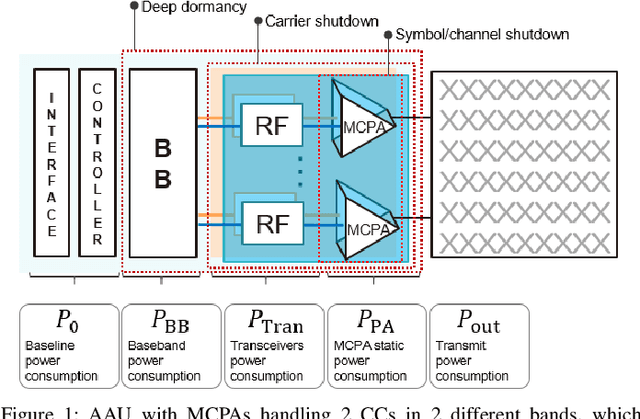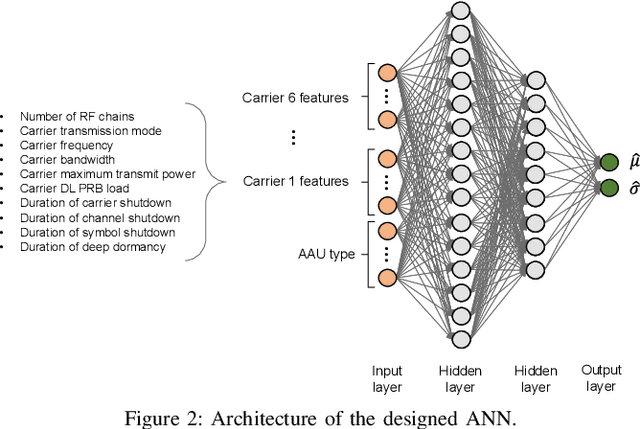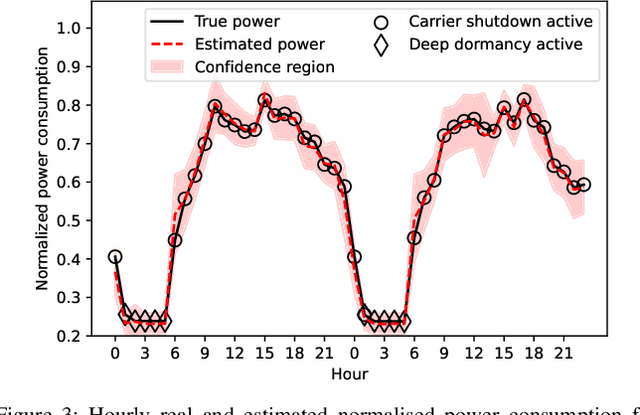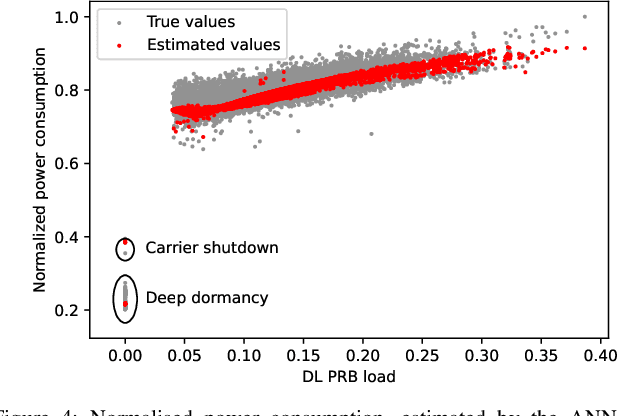Harvey Bao
Energy Efficient Operation of Adaptive Massive MIMO 5G HetNets
Feb 20, 2023



Abstract:For energy efficient operation of the massive multiple-input multiple-output (MIMO) networks, various aspects of energy efficiency maximization have been addressed, where a careful selection of number of active antennas has shown significant gains. Moreover, switching-off physical resource blocks (PRBs) and carrier shutdown saves energy in low load scenarios. However, the joint optimization of spectral PRB allocation and spatial layering in a heterogeneous network has not been completely solved yet. Therefore, we study a power consumption model for multi-cell multi-user massive MIMO 5G network, capturing the joint effects of both dimensions. We characterize the optimal resource allocation under practical constraints, i.e., limited number of available antennas, PRBs, base stations (BSs), and frequency bands. We observe a single spatial layer achieving lowest energy consumption in very low load scenarios, whereas, spatial layering is required in high load scenarios. Finally, we derive novel algorithms for energy efficient user to BS assignment and propose an adaptive algorithm for PRB assignment and power control. All results are illustrated by numerical system-level simulations, describing a realistic metropolis scenario. The results show that a higher frequency band should be used to support users with large rate requirements via spatial multiplexing and assigning each user maximum available PRBs.
Power Consumption Modeling of 5G Multi-Carrier Base Stations: A Machine Learning Approach
Dec 08, 2022



Abstract:The fifth generation of the Radio Access Network (RAN) has brought new services, technologies, and paradigms with the corresponding societal benefits. However, the energy consumption of 5G networks is today a concern. In recent years, the design of new methods for decreasing the RAN power consumption has attracted interest from both the research community and standardization bodies, and many energy savings solutions have been proposed. However, there is still a need to understand the power consumption behavior of state-ofthe-art base station architectures, such as multi-carrier active antenna units (AAUs), as well as the impact of different network parameters. In this paper, we present a power consumption model for 5G AAUs based on artificial neural networks. We demonstrate that this model achieves good estimation performance, and it is able to capture the benefits of energy saving when dealing with the complexity of multi-carrier base stations architectures. Importantly, multiple experiments are carried out to show the advantage of designing a general model able to capture the power consumption behaviors of different types of AAUs. Finally, we provide an analysis of the model scalability and the training data requirements.
Machine Learning and Analytical Power Consumption Models for 5G Base Stations
Sep 23, 2022



Abstract:The energy consumption of the fifth generation(5G) of mobile networks is one of the major concerns of the telecom industry. However, there is not currently an accurate and tractable approach to evaluate 5G base stations (BSs) power consumption. In this article, we propose a novel model for a realistic characterisation of the power consumption of 5G multi-carrier BSs, which builds on a large data collection campaign. At first, we define a machine learning architecture that allows modelling multiple 5G BS products. Then, we exploit the knowledge gathered by this framework to derive a realistic and analytically tractable power consumption model, which can help driving both theoretical analyses as well as feature standardisation, development and optimisation frameworks. Notably, we demonstrate that such model has high precision, and it is able of capturing the benefits of energy saving mechanisms. We believe this analytical model represents a fundamental tool for understanding 5G BSs power consumption, and accurately optimising the network energy efficiency.
 Add to Chrome
Add to Chrome Add to Firefox
Add to Firefox Add to Edge
Add to Edge